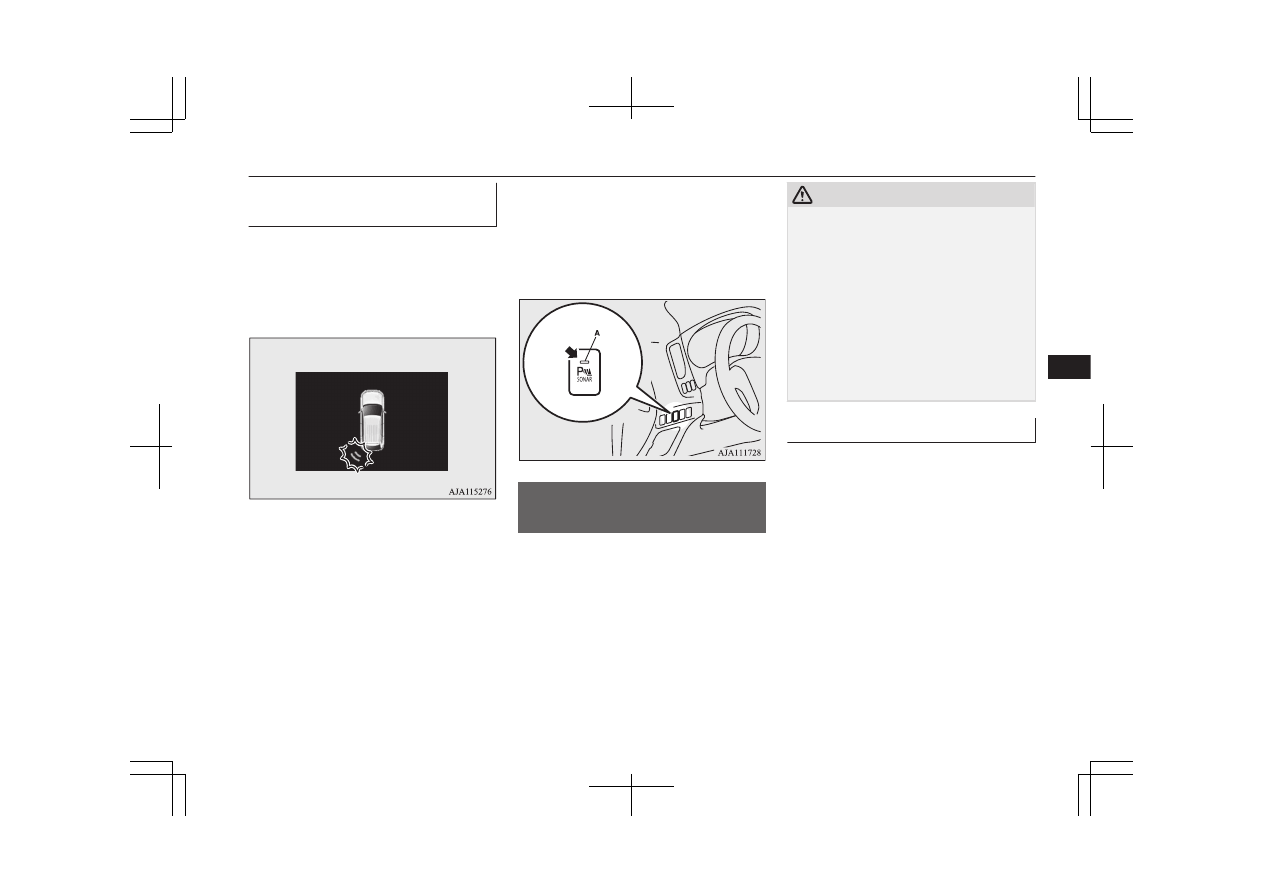Mitsubishi Outlander PHEV (2019 year). Instruction - part 21

Reversing sensor system warn-
ing display
E00615901519
In case there is a malfunction in the reversing
sensor system, the display for the malfunc-
tioning sensor will blink and the warning
buzzer will sound for approximately 5 sec-
onds.
Example: Corner sensor (left) malfunctioning
Even after the buzzer and display has stopped
warning, the indication lamp (A) on “SO-
NAR” switch will continue blinking until the
system reverts to the normal state. Have the
vehicle inspected at a MITSUBISHI
MOTORS Authorized Service Point.
Parking sensors (Front/
Rear)*
E00647700092
When parking in a garage or during parallel
parking, these sensors alert the driver to any
objects near the vehicle and their distance,
through a buzzer and the sensor display on
the information screen in the multi-informa-
tion display.
CAUTION
l
The parking sensors assist you in determin-
ing the approximate distance between the
vehicle and any objects. It has limitations in
terms of detectable areas and objects, and
may not properly detect some objects.
Therefore, do not place excessive confidence
in the parking sensors, and operate the vehi-
cle as carefully as you would do with vehicle
not equipped with this system.
l
Make sure to check the surroundings with
your own eyes to ensure safety. Do not oper-
ate the vehicle by relying on the parking sen-
sors alone.
Obstacle detection areas
E00647800136
The detection areas of the corner and back
sensors are limited to those shown in the il-
lustration. Moreover, the sensors are unable
to detect low or thin objects or objects near
the front or rear bumper. Thus, make sure to
check the surroundings as you operate the ve-
hicle in a safe manner.
Parking sensors (Front/Rear)*
7-101
OGGE19E1
Starting and driving
7